1982 DMC DeLorean With 6k Genuine Miles!
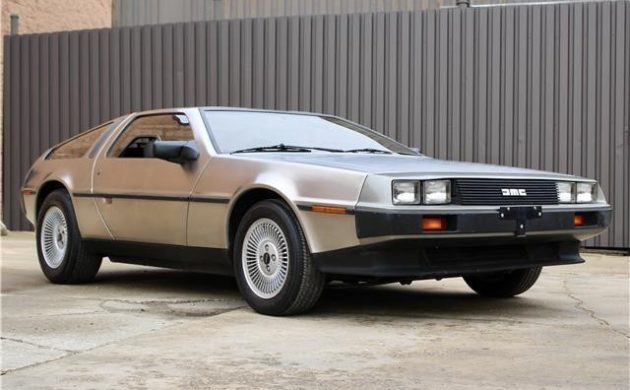
If you believe everything written, John DeLorean and Preston Tucker had much in common. Both were snappy dressers with engaging personalities and the ability to make those about them feel at ease. Each realized the dream of establishing a car company bearing their name…and both failed catastrophically after producing a single model in limited numbers. The reason for the failures will be different, depending on which version of history you believe, but the cars they produced have now become desirable in the classic market. This 1982 DMC DeLorean is an example of that trend. It has a genuine 6,887 miles showing on its odometer and appears to need nothing but a new home. The seller has listed this classic here on eBay in Elmhurst, Illinois. Bidding sits at $28,677, although that is below the reserve.
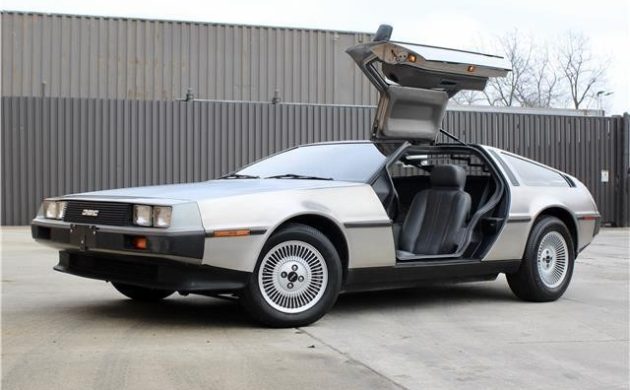
The story of the DeLorean Motor Company reads like a Greek tragedy. John DeLorean established his reputation for innovation early in his career at Packard before joining Pontiac in 1956. He is credited as the driving force behind the GTO, the badge considered the first genuine muscle car. He migrated to the helm of Chevrolet, but after ongoing clashes with the board of General Motors, DeLorean left the company in 1973 to pursue his dream of establishing a car company where every vehicle wore his surname. In an almost eerie similarity to the Bricklin SV1, DeLorean claimed its new gullwing offering would focus firmly on safety. The first cars emerged from the company’s new factory in the suburb of Dumurry, Belfast, Northern Ireland, in early 1981. To say the endeavor was chaotic would not be an understatement because the car’s engineering was rushed, and the workforce had no experience producing gullwing sports cars with stainless steel panels. DeLorean envisaged producing over 10,000 cars annually, but the goal was never reached before the endeavor collapsed in 1982. This car was built in late 1981 as a 1982 model but didn’t find its first owner until 1983. It has a documented history, confirming the odometer reading is accurate. Its condition is impressive for its age, with no visible problems on its brushed stainless panels. This survivor has been garage-kept for its entire life, leaving it rust-free and structurally sound. A comprehensive image gallery in the listing confirms that the frame’s epoxy coating is intact. The urethane bumpers exhibit the typical age discoloring, but since purists consider this acceptable, they can be left as-is. The glass and seals are in good order, and the wheels are spotless.
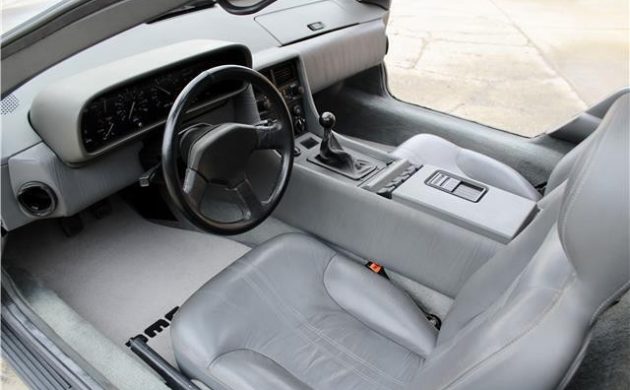
The impressive presentation of this DeLorean continues when we examine the interior. It is trimmed in Gray leather, showing no wear or dryness. A set of factory floor mats protects the matching carpet, and the cargo net is intact. The dash and console are excellent, and there is no evidence of damaged plastic or UV exposure. The company’s initial focus may have been on safety, but the interior features factory equipment buyers expected when paying a premium for the ownership experience. These include air conditioning, power windows, power locks, power mirrors, a rear defogger, a leather-wrapped tilt/telescopic wheel, and a premium AM/FM radio/cassette player.
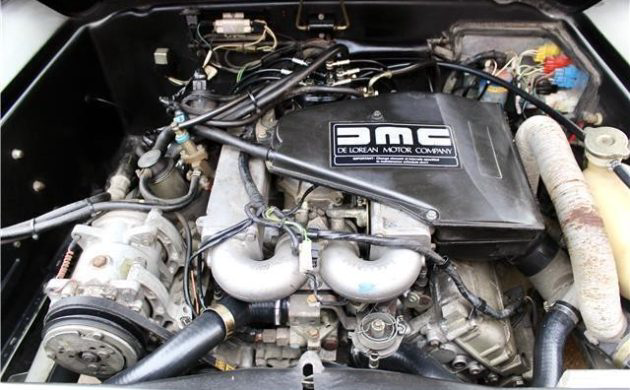
John DeLorean has an engineering degree and years to develop his new model, making it amazing that its mechanical specifications were a disaster. He envisaged utilizing a Wankel rotary or Ford V6 to power his creation, but neither eventuated. He signed a deal for the 2.8-liter PRV (Peugeot/Renault/Volvo) V6, which he planned to mid-mount. However, when he contracted legendary designer Colin Chapman to develop the concept, Chapman found that there was insufficient time or a budget to bring the plan to fruition. Therefore, the most cost-effective solution was to follow the lead of companies like Porsche and adopt a rear-mounted architecture. The V6 was not the powerhouse buyers hoped for, producing 130hp and 153 ft/lbs of torque. European examples weren’t as hamstrung by emission regulations, with buyers receiving a more potent set of figures. The drive fed to the road via a five-speed manual transaxle. There was a three-speed automatic option, although that was best left to those who liked to measure acceleration figures using a calendar! The seller confirms this DeLorean is mechanically original and that the comprehensive collection of original manufacturer documentation confirms the odometer reading. It is a turnkey proposition where the winning bidder could fly in and drive it home.
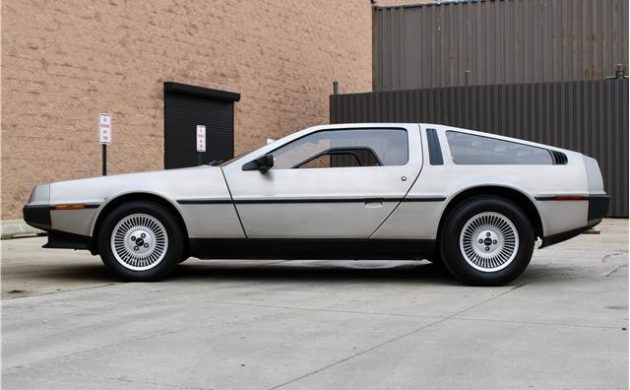
The collapse of the DeLorean Motor Company was almost inevitable, and financial mismanagement was only part of the story. Like Tucker, DeLorean didn’t have the funds or engineering prowess to develop a new model at the rate of its competitors, meaning that their cars would only be a few years old before being considered outdated. Today, collectors covet both, and values continue climbing as a result. Recent sales results suggest the bidding on this car should top $50,000 before the hammer falls, although a higher figure is possible. Do you think it will make it?
Auctions Ending Soon
 2002 Subaru Impreza WRXBid Now2 days$333
2002 Subaru Impreza WRXBid Now2 days$333
 1975 Chevrolet Corvette ConvertibleBid Now2 days$4,000
1975 Chevrolet Corvette ConvertibleBid Now2 days$4,000
 1964 Ford F-100 Camper CustomBid Now2 days$2,000
1964 Ford F-100 Camper CustomBid Now2 days$2,000
 2006 Jeep Wrangler SportBid Now4 days$10,500
2006 Jeep Wrangler SportBid Now4 days$10,500
 1974 Datsun 260ZBid Now6 days$750
1974 Datsun 260ZBid Now6 days$750

Comments
Honestly I wanted one back in the day, then the back to the future movie came out and people started making the clone cars now I don’t want one there are lots of YouTube videos where people try to improve on its performance some succeed and others not so much, maybe put a lucid power plant in this and see how it does.
I almost bought one of these in the early 80’s until I drove one. They are grossly under powered, the toll windows make the windows completely useless and there are extremely bad “blind spots” in both the left/right rear.
Rich dude? It has had 3 owners.
Good write-up and history lesson Adam.
When I now see a Delorean, and having read the history, the hurdles it took to even get to production come to mind. And they remind me that things we think ought to happen, that are elaborate and complex, are actually way more complicated than we realize. Examples: why don’t ‘they’ build a bridge here, why is it taking so long to get that new subdivision ready for houses, why can’t my town improve its power distribution system. Lots of design, engineering, permitting, et al required. Plus…. lots of money. And time.
Anyhow, I don’t want one of these but I do enjoy seeing them. This one looks good.
John Z’s ego trip. The “better” Bricklin. Underpowered, ergonomically disastrous, and greatly overpriced. If not for the movie? A forgotten failure.
Low mileage Deloreans are nothing unusual. I was selling cars in Santa Fe, New Mexico when these hit the market. The dealer on the next block down carried them (note, I didn’t say sold as very few actually sold). That was, until the “Coke Bust” when suddenly he was able to drastically mark up the price and sold every single one in stock quickly! I’m sure they all went to people who squirreled them away, thinking they were an “investment” for the future. Well this car shows how well that went – it’s priced today for about what it would have sold for in 1982. That same $25,000 – $30,000 in a proper mutal fund would be about a $million today!
A great example of even when the engineers and designers say it can be done is the end result worth the time and expense.
These cars were nice futuristic cars………but John DeLorean chose a LAME engine for them and they have suffered dramatically ever since. I test drove one and was NOT impressed by the lack of performance. A Falcon 6 cylinder would outrun one. I’m sure there were better choices for engines available at that time, so why he chose the one he did is beyond me.
The powertrain (engine + transaxle) is basically the same as the Alpine A310 V6, bored-out slightly but without Alpine’s tuning attentions, though the DeLorean was also a larger car (over a foot wider) with higher drag and weighed 550 lbs. more than the Alpine.
As for why that powertrain, the simple answer is that it was relatively light (all-aluminum block and head) and compact, adequately (albeit not superlatively) powerful, would work pretty much as-is with minimal development investment (thx to prior application in the Alpine), serviceable for the US market (thx to Volvo and Peugeot models using variants of the same engine here), and Renault was willing to sell it to DMC in volume.
The original plan for a mid-mounted Wankel rotary engine from Citroen fell through (just as well, as Citroen gave up on it soon thereafter), nothing else available was adequately powerful yet small enough to mid-mount with minimal revisions to the body and chassis (tho’ apparently the Citroen CX powertrain was briefly considered), and other engines for a rear-mount approach were either too long or heavy (exacerbating rear-engine handling perils, which took Porsche another decade to tame in the 911) or simply not available for purchase in volume.
Maybe a better powertrain solution could have been arranged given more time and money, but those were rapidly running short, so it came down to picking an engine or giving up on the whole enterprise, and John Z. made the call to commit to what would get production underway at all.
Rust Free???!?#👀😵💫🤔
Maybe because it’s Stainless Steel? Just Sayin’
Crappy cars then, crappy cars now 🤮
If it comes with an operational flux capacitor I might be interested, if not then it’s way overpriced!
The most uncomfortable seat I have ever experienced. Lousy driver position and not worth buying other than for an ornament and historic motoring mistake for the Garden.